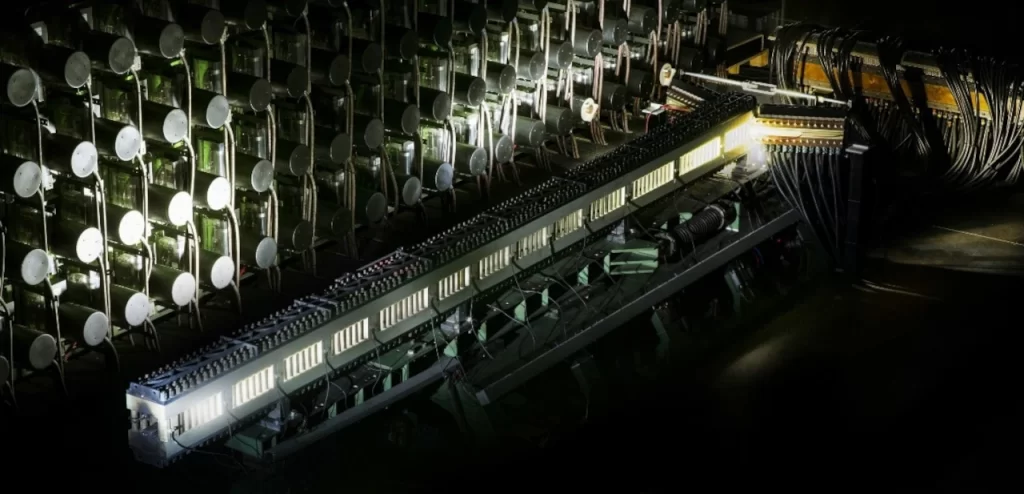THEMA (TecHnology for Electromagnetic Artillery) is one of the 41 new research initiatives unveiled by the European Commission on June 27. Nexter, a member of the KNDS group, has been chosen to coordinate the programme.
THEMA seeks to “mature critical components” of an electromagnetic cannon designed to “complement” other “defensive” weapon systems, particularly those devoted to air defence, with a budget of nearly 15 million euros provided by the European Defence Fund (EDF).
The project’s functional requirements include developing a Medium calibre electromagnetic artillery system for air defence, specifically anti-missile warfare and C-RAM (Counter rocket, artillery, and mortar). It is capable of anti-surface warfare as a secondary function. The system is designed for both land and sea forces. The Medium calibre electromagnetic gun should have a total launched mass between 3 kg and 5 kg (to be refined during the system analysis phase) and a Muzzle velocity less than or equal to 2000 metres per second. The energy density of the intermittent power supply is less than 1 MJ/m3. The project intends to develop two modules to demonstrate that the upscaling capability fulfils the full system requirements. Medium calibre hypervelocity projectiles feature a low-drag and heat-resistant aerodynamic profile, kinetic penetrator or airburst/fragmentation warhead, and mission-specific fuse, explosive, course correction, or GNC (Guidance, navigation, and control) capabilities.
In May 2020, the European Defence Agency (EDA) and the French-German Research Institute of Saint-Louis (ISL) initiated a collaborative research project on electromagnetic railguns involving five European nations. The name of the study was PILUM [Projectiles for Increased Long-range Effects Using ElectroMagnetic Railgun], and it was a part of the PADR [Preparatory Action on Defence Research]. ISL was selected for its experience in “PEGASUS” and “RAFIRA” projects.
The 10 MJ PEGASUS launcher is an electromagnetic launcher used to advance the launcher and affiliated electrical component technology. It is used to develop a dependable acceleration system to achieve extremely extended ranges. ISL states that its floating body (Mass 1 kg) can achieve hypervelocities (> 2500 m/s). The electromagnetic launchers of the ISL have a high rate of electrical energy conversion to kinetic energy (> 35%).
RAFIRA is a Railgun-type electric launcher (calibre 25 mm2) capable of discharging five consecutive rounds at extremely rapid rates. RAFIRA can accelerate 100-gram projectiles to over 2400 metres per second or one hundred thousand grammes in single-fire mode. This launcher is used to investigate the viability of anti-aircraft warfare on ships. To counter missiles, discharge rates above 50 Hz are necessary.

The EDA-PADR PILUM Project spanned two years to demonstrate the viability of creating an electromagnetic railgun for artillery applications with a range of up to 200 kilometres. Potential integration with ships and other military platforms was to be investigated. Experimental, simulation, and modelling were conducted to demonstrate the practicability of employing these railguns. These investigations serve as the foundation for the definitive construction of a demonstrator within eight years (2028). Thus, an EMG system is a promising option for bridging the gap between conventional artillery – cost-effective but limited to 70 km range and missiles – long-range but costly and thus limited to high-level targets.
The THEMA initiative is of interest to multiple nations. Italy (with MBDA Italia and Simmel Difesa), Belgium (with the von Karman Institute), Cyprus, Bulgaria (with the “Professor Tsvetan Lazarov” Institute), Estonia, Portugal, Germany (with Diehl Defence and the “Fraunhofer-Gesellschaft” institute), and Poland are participating.
Other actors, including the French group’s Naval Group in their capacity as “system integrators,” were expected to participate. Also associated with the PILUM programme were the Belgian von Karman Research Institute (specialising in fluid dynamics and propulsion), the German Diehl Munition Defence, the Polish Eplomet (specialising in the explosive metal coating), and the Italian ICAR, a manufacturer of high-intensity electric capacitors.
The concept of an electromagnetic cannon is enticing on paper. Compared to current artillery systems, such a weapon would enable projectiles to be launched three to five times further at a much lower cost [assuming the projectile can be precisely guided to its intended target]. In addition, it would not require pyrotechnics, which necessitates numerous storage security measures.
Between two conductive rails, an electromagnetic cannon operates by circulating an extremely powerful electric current and magnetic field. Due to the force of Laplace, a “conductive” projectile placed between these rails experiences a very strong acceleration before being ejected at a speed of at least Mach 5 and travelling up to 200 kilometres.
Nevertheless, this necessitates overcoming numerous technological obstacles (materials, energy, mechanical constraints, etc.). The United States Navy (Office of Naval Research, Naval Surface Warfare Centre Dahlgren Division, and BAE Systems), which was substantially advanced in this field by the early 2000s, appears to have given up. Or, at the very least, its electromagnetic cannon endeavour is moving slowly due to a lack of funding.
In addition, Japan (ATLA), India (DRDO), the United Kingdom (DRA), France, Russia, and China are all conducting research on electromagnetic railguns at various phases of development. China claims to have undertaken sea trials of its prototype, although not yet deployed.
Some nations have experimental electromagnetic railguns, but the difficulty is in scaling up.
